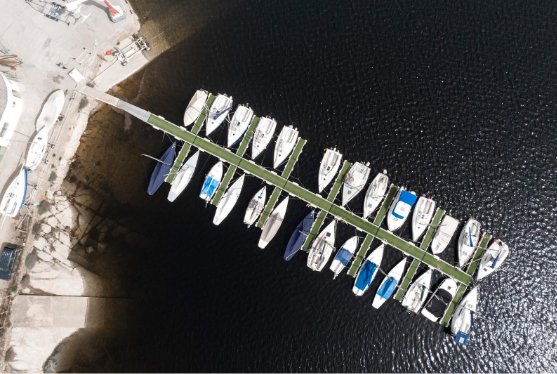Recreational boating is not just about enjoying the water; it’s also about practicing proper boating etiquette. Boating etiquette is a customary code of accepted behavior on and around the water that ensures both safety and social harmony. Whether you’re cruising on a busy lake or sailing along the coast, it’s important to be mindful of your actions and respect others who share the water with you.
In this article, we will explore the basics of boating etiquette and provide you with essential tips to navigate the boating world easily while promoting safety and enjoyment for everyone involved.
Why Boating Etiquette Matters
Boating etiquette is of utmost importance for several reasons. Firstly, it helps maintain safety on the water. Unlike the highway, the open water lacks signposts and markings, making it crucial for boaters to follow general rules and guidelines. By adhering to boating etiquette, you contribute to preventing crashes and reducing injuries.
The basic boating etiquette rules, often called boat “give-way” rules, govern how boats pass each other and interact on the water. Secondly, boating etiquette ensures that everyone has a good time. It helps minimize conflicts, promotes social harmony, and allows all boaters to enjoy their time on the water without disturbance. Lastly, proper boating etiquette helps in preserving and protecting the environment.
By following guidelines and regulations, boaters can minimize their impact on wildlife and ecosystems, ensuring the sustainability of our waterways for future generations.
Know the Waterway Rules
To ensure safety and courtesy on the water, it is essential to familiarize yourself with the rules and regulations that govern boating activities. These rules protect lives and vessels and maintain order on the water. While not all rules directly relate to safety, practicing courtesy is equally important. Understanding and adhering to the waterway rules will help you navigate confidently and responsibly.
Familiarize yourself with local regulations, speed limits, navigation aids, and any specific guidelines for the waterways you plan to explore. By being aware of these rules, you contribute to a safer and more enjoyable boating experience for everyone.
General Safety Considerations
- Don’t follow too closely
- Swing wide when coming around the bend
- Watch out for skiers and wakeboarders “bobbing in the water”
Speed and Wake Considerations
Maintaining an appropriate speed and minimizing wake is crucial for the safety and comfort of others on the water. The wake created by a moving boat can have varying effects on nearby vessels. It’s important to be mindful of the wake your boat generates, as it can cause damage to other boats and even pose a risk to passengers. Boat-ed.com provides insights into three different operating speeds and the wakes they create:
- Displacement speed: This is the slowest speed for motorboats, where the bow remains in the water, creating the least amount of wake.
- Transition speed: As you increase speed, the bow rises, and the stem plows through the water, creating the largest amount of wake.
- Planing speed: The boat levels out at higher speeds, resulting in less wake than at the transition speed. It’s important to note that larger boats are not designed to reach planning speed.
By understanding the wake generated by different speeds and adjusting your boat’s speed accordingly, you can minimize the disturbance caused to other boaters and ensure a safer and more enjoyable experience for everyone sharing the water.
Anchoring and Docking Etiquette
Proper anchoring and docking etiquette are essential to avoid conflicts, accidents, and delays. Whether you’re launching, docking, or anchoring your boat, preparation, efficiency, and consideration are key. Boats.com offer some tips to keep in mind:
- Be prepared: Ensure your boat is ready before approaching the ramp or dock. Load gear, remove tie-downs, and test the engine in a designated area, allowing other boaters to access the ramp while you prepare.
- Practice your job: Whether you’re driving the tow vehicle or operating the boat, be proficient in your designated role. If you’re inexperienced in backing your trailer or maneuvering in tight spaces, practice in an empty parking lot or vacant area before attempting it in a busy boating environment.
- Be courteous: If your passengers are not ready to board or disembark, idle away from the dock or ramp until they are prepared. When returning, drop off passengers first and idle away until someone returns with the tow vehicle and trailer.
By following these anchoring and docking etiquette guidelines, you contribute to a smoother and more efficient boating experience while respecting the needs of other boaters.
Keep it Clean
To protect the beauty and health of our waterways, it’s crucial to maintain clean water and dispose of waste materials properly. Sailors for the Sea and Discover Boating have provided some tips to help you become a more environmentally friendly boater.
- Be careful when refueling: Avoid spilling fuel into the water. Check your fuel lines and tanks for any leaks, and have a spill kit on hand to contain and clean up any spills that may occur.
- Proper disposal of waste: Take responsibility for your trash and never throw it into the water. Always dispose of your garbage properly when you’re onshore. Additionally, consider picking up any trash you come across on land and in the water to help keep the environment clean.
- Sanitation facilities: Ensure that your boat has proper onboard sanitation facilities and never dump sewage or waste into the water. Follow the regulations and guidelines regarding waste disposal to protect water quality and prevent pollution.
- Anchoring techniques: When anchoring, be mindful of the impact on ecosystems. Avoid dropping anchor on sensitive habitats such as coral reefs or seagrass beds, as they provide essential habitats for marine life. Use designated anchoring areas whenever possible to minimize damage to the environment.
By adopting these practices, you contribute to preserving our waterways, protecting wildlife, and maintaining the natural beauty of the areas you explore.
Communication and Signaling
Effective communication and signaling are vital for maintaining safety and avoiding misunderstandings on the water. Here are some key methods of communication used in boating:
- Marine radio: Use a marine radio to communicate with other boaters, marinas, or authorities. It allows for clear and direct communication, especially in emergencies.
- Visual signals: Learn and understand commonly used visual signals, such as navigation lights, distress signals, and hand gestures, to communicate your intentions and alert others to potential hazards.
- Sound signals: Familiarize yourself with the signals that indicate your presence, intentions, and potential dangers. Sound signals are particularly important in situations with limited visibility or when passing other vessels.
Clear and effective communication ensures that other boaters know your actions, intentions, and presence, reducing the risk of accidents and enhancing overall safety on the water.
Wildlife and Environmental Awareness
Boating activities can impact wildlife and the environment, and it is essential to be responsible and respectful when interacting with nature. Here are some tips for promoting wildlife and environmental awareness while boating:
- Keep a safe distance: Maintain a safe distance from wildlife, such as marine mammals, birds, and nesting areas. Approach them slowly and quietly to avoid causing stress or disturbance.
- Minimize noise pollution: Excessive engine noise can disrupt marine life and their habitats. Operate your boat at lower speeds in sensitive areas and use quieter propulsion systems when possible.
- Dispose of fishing lines properly: Fishing lines and gear can pose a significant threat to marine life if not disposed of properly. Collect and store used fishing lines and dispose of them in designated recycling bins to prevent entanglement and harm to wildlife.
- Respect protected areas: Familiarize yourself with protected areas, such as marine reserves or wildlife sanctuaries, and follow any specific regulations or restrictions in place. These areas are designated to conserve and protect fragile ecosystems and wildlife populations.
By practicing responsible boating and being aware of the impact of your actions on the environment, you become a steward of the waterways, promoting the preservation of wildlife and ecosystems for future generations to enjoy.
Conclusion
Proper boating etiquette is crucial for safety, enjoyment, and environmental conservation on the water. By following the guidelines and tips outlined in this article, you can easily navigate the boating world, respect fellow boaters, and protect the natural beauty of our waterways.
Remember to adhere to the rules and regulations, communicate effectively, and be considerate of the environment and wildlife. You contribute to a harmonious and sustainable boating community by practicing good boating etiquette.
FAQs
Are there specific boating rules for different water bodies?
Boating rules and regulations vary depending on the water body you are navigating. It’s important to familiarize yourself with the specific regulations of the water body you plan to use, which may include speed limits, restrictions, and equipment requirements. Knowing and following these rules allows you to navigate the waters responsibly and avoid potential conflicts or accidents.
It necessary to wear a life jacket at all times while boating?
Wearing a life jacket while boating is highly recommended, especially for those who may not be strong swimmers or are in risky situations. Life jackets can keep you afloat and increase your chances of survival in emergencies. It’s important to comply with local laws and requirements regarding life jacket usage.
Can I anchor my boat anywhere?
Anchoring your boat should be done in designated areas where it is allowed. It is important to avoid anchoring in sensitive habitats, such as coral reefs or seagrass beds, as it can cause irreversible damage to these ecosystems. By respecting local regulations and guidelines, we can help preserve the marine environment and ensure our vessel’s and others’ safety.
Get the right coverage for your boat with tutenagency
New tutenagency customers?
Quote boat insurance online or call (334) 502-5111 to insure your pet.
Disclaimer: This content is for informational purposes only and should not be considered legal or financial advice. Always consult with qualified professionals in legal and financial fields before making any decisions.

